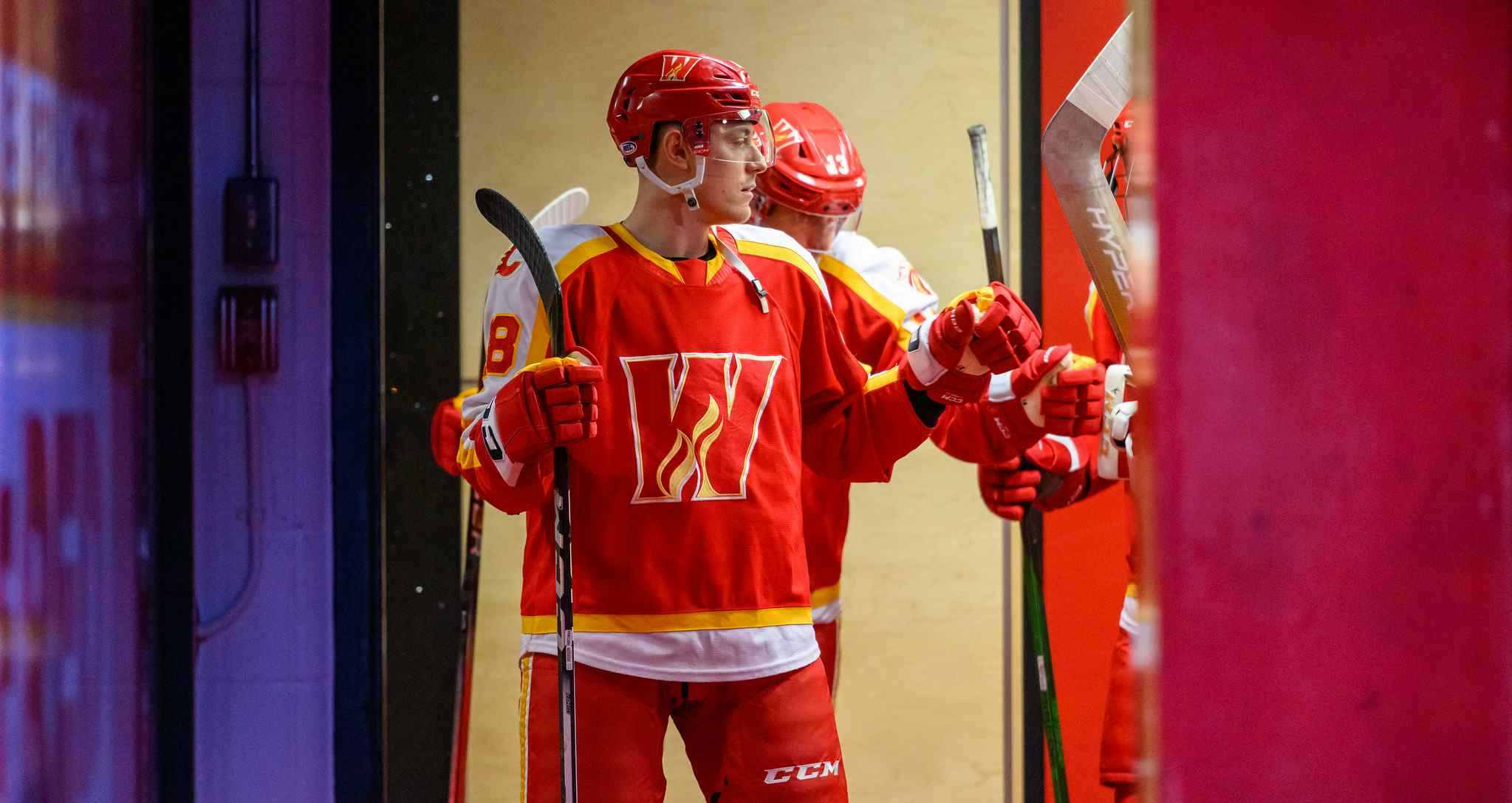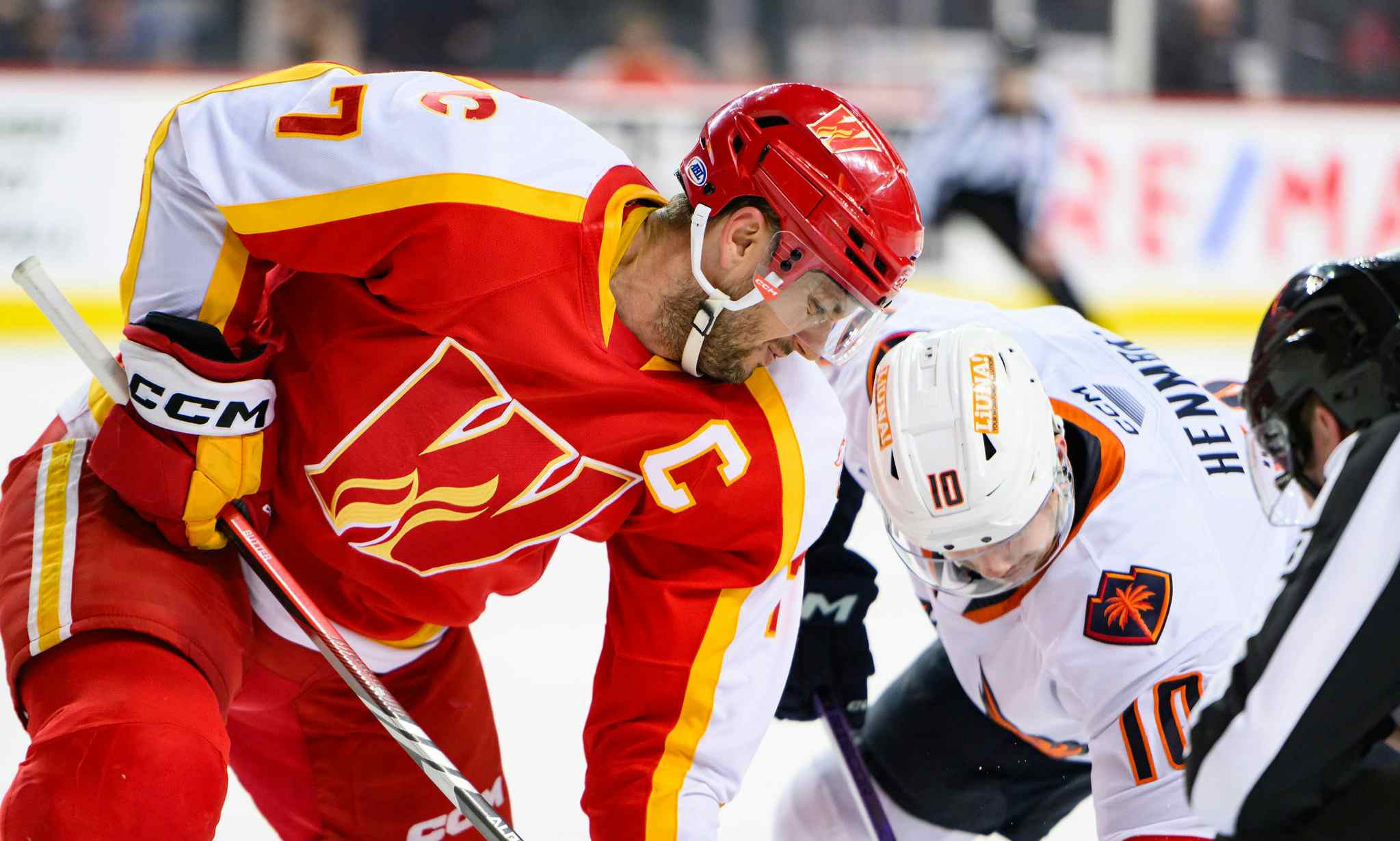How should the Flames special teams groups be structured?
By Ryan Pike
7 years agoThis off-season has brought a lot of change for the Calgary Flames, as the organization has swapped a lot of bodies in and out – both on and off the ice. In addition to the on-ice acquisitions of Brian Elliott, Chad Johnson, Troy Brouwer and Matthew Tkachuk, the club has also added a new head coach in Glen Gulutzan and a pair of new assistant coaches in Paul Jerrard and Dave Cameron.
One of the big criticisms that many observers had of former Flames coach Bob Hartley was his special teams performance and deployments. Now that there’s a new bench boss, it’s likely a good time to take a look at what the Flames have available to kick off 2016-17 in terms of special teams – as they were among the worst in the entire NHL in that realm. Who should be on the power play and the penalty kill this season? And, anticipating how the roster might shake out, what’s the best way to balance out ice-time and high-pressure, high-leverage minutes?
SOME ROSTER ASSUMPTIONS
To start off, let’s presume that the Flames roll with roughly the following line-up for next season.
Johnny Gaudreau – Sean Monahan – Troy Brouwer
Micheal Ferland – Mikael Backlund – Michael Frolik
Matthew Tkachuk – Sam Bennett – Hunter Shinkaruk
Lance Bouma – Matt Stajan – Alex Chiasson
Micheal Ferland – Mikael Backlund – Michael Frolik
Matthew Tkachuk – Sam Bennett – Hunter Shinkaruk
Lance Bouma – Matt Stajan – Alex Chiasson
Mark Giordano – T.J. Brodie
Jyrki Jokipakka – Dougie Hamilton
Deryk Engelland – Dennis Wideman
Jyrki Jokipakka – Dougie Hamilton
Deryk Engelland – Dennis Wideman
In terms of zone starts, let’s use the basic assumption that the Bennett line gets the most shelter (in terms of opposition and zone starts), while the Stajan line gets thrown to the wolves (in terms of both), leaving the Monahan and Backlund lines with a mixture of situational uses (with Backlund’s unit getting buried a bit more because they’ve shown they can dig themselves out of bad deployment situations). Defensively, Jokipakka/Hamilton get sheltered and Engelland/Wideman get buried in the defensive zone, while Giordano/Brodie get a lot of offensive zone time but also face the better opposition players.
THE POWER PLAY
What’s the goal of a power-play? Well, to score, but primarily to generate chances (because a high frequency of chances is what leads to scoring). Thus, we use Corsi For Per 60 Minutes (or CF60) as a metric to judge players on the power-play, since it approximates their ability to put pucks at the net with the man advantage.
The 2015-16 power-play performances of Calgary’s prominent 2016-17 players was as follows:
- Forwards: Gaudreau (98.10), Monahan (97.72), Ferland (90.00), Chiasson (78.76), Backlund (77.24), Bennett (76.20), Vey (74.90), Brouwer (65.90)
- Defensemen: Hamilton (106.43), Giordano (94.64), Wideman (88.61), Brodie (64.63), Nakladal (61.31)
(I kept Nakladal in here since he hasn’t signed elsewhere yet…)
So what’s the best way of putting together a power-play unit? Well, it depends. The Flames (particularly their GM) seem to agree with the common wisdom that you need a mixture of left and right shots as it allows for more rapid lateral puck movement throughout the zone and quicker one-timers, and it was even mentioned when Brouwer was signed. So let’s assume that any scheme needs to have some of both.
Beyond that? Who has shown the ability to generate shots with the extra man, and who do we expect to be able to?
2015-16 First Unit: Gaudreau-Monahan-Hudler-Giordano-Hamilton
2015-16 Second Unit: Bennett-Backlund-Ferland/Colborne-Brodie-Wideman
Ideal First Unit: Gaudreau-Monahan-Tkachuk-Hamilton-Giordano
Ideal Second Unit: Bennett-Backlund-Brouwer-Brodie-Wideman
The top unit has a good puck distributor in Gaudreau, a couple of booming point shots in Hamilton and Giordano, and Tkachuk and Monahan mucking around in front of the net and creating havoc. In addition, Tkachuk (per Brock Otten of OHL Prospects) is adept at offensive zone entries, and often carried the puck in and drew in opposition defenders, which opened up chances for his linemates. Given the Flames had a first unit that had Gaudreau that could get the puck in and few others, Tkachuk seems like a good fit here.
The second unit is the Killer Bs…and Wideman. Brouwer and Bennett can muck in front of the net. Wideman has the booming point shot (and his power play production is arguably his best asset). Backlund is an effective distributor, while Brodie is basically an elite puck mover. This unit is a bit thinner than the top unit, and probably reliant on Bennett and Backlund to get the puck in and set things up.
Depending on what happens, you could always swap Ferland into either unit, but so far he hasn’t demonstrated high-end offensive abilities nor really the ability to “effectively” muck around in front of the net and open up lanes or chances. He can probably do it in a pinch, but he wasn’t super-effective in 2015-16 in limited PP duties. Shinkaruk could also be effective on the PP, but he’d be more of a finesse option (and the top two units already have a lot of left-shooting finesse guys).
THE PENALTY KILL
Just as you want the power-play to generate pucks on net, you want your penalty kill to suppress them. So which players have historically shown the ability to do so?
- Forwards: Backlund (89.15), Chiasson (89.41), Monahan (90.70), Frolik (94.32), Stajan (97.41), Brouwer (99.43), Bouma (117.54)
- Defense: Jokipakka (83.98), Hamilton (87.56), Engelland (88.25), Wideman (90.22), Brodie (93.57), Giordano (96.01)
My ideal PK units do the following things: win faceoffs, keep the puck to the outside, clear out secondary chances before they force the goalie to flail around crazily, and chip the puck down the ice. Oh, and it’d be great if they could help suppress zone entries, too. (A PP unit that spends its time circling around endlessly in the neutral zone isn’t all that scary to a defending team.)
2015-16 First Unit: Backlund-Frolik-Giordano-Brodie
2015-16 Second Unit: Stajan-Bouma/Jooris-Russell-Wideman
Ideal First Unit: Backlund-Frolik-Jokipakka-Hamilton
Ideal Second Unit: Stajan-Chiasson-Engelland-Wideman
Hartley tended to have three pairs of forwards that he rotated through. If Gulutzan decides that’s what he wants to do, Monahan and Brouwer could be an effective third pairing if needed. I know that Engelland and Wideman aren’t the ideal PK pairing, in that they occasionally struggle to get the puck out and aren’t amazing at suppressing entries. But you probably don’t want to ride Giordano and Brodie too much if you want to get the most out of them over the course of a game (or an 82-game season). In the interest of balancing ice-time, you probably want to use the bottom-pairing guys on the PK for kills that don’t potentially tilt the balance of the game.
And for really crucial kills, you can always rotate Giordano and Brodie into whichever grouping you’d like anyway.
OVERALL USAGE
In an ideal world, you’d use your players in situations that allow them to flourish and help your team win, but don’t burn your bench out. Ideally, you want to have good lines and units that you can roll out consistently over 82 games.
So with the proposed lines and units, here’s a glance at how the players are utilized:
| Gaudreau | 1st line F; 1st unit PP |
| Monahan | 1st line F; 1st unit PP |
| Brouwer | 1st line F; 2nd unit PP; (3rd unit PK) |
| Ferland | 2nd line F |
| Backlund | 2nd line F; 2nd unit PP; 1st unit PK |
| Frolik | 2nd line F; 1st unit PK |
| Tkachuk | 3rd line F; 1st unit PP |
| Bennett | 3rd line F; 2nd unit PP |
| Shinkaruk | 3rd line F |
| Bouma | 4th line F |
| Stajan | 4th line F; 2nd unit PK |
| Chiasson | 4th line F; 2nd unit PK |
| Giordano | 1st pair D; 1st unit PP |
| Brodie | 1st pair D; 2nd unit PP |
| Hamilton | 2nd pair D; 1st unit PP; 1st unit PK |
| Jokipakka | 2nd pair D; 1st unit PK |
| Wideman | 3rd pair D; 2nd unit PP; 2nd unit PK |
| Engelland | 3rd pair D; 2nd unit PK |
As you can see, right now I see Backlund and Hamilton as really important secondary players (to the point where they’re basically primary players in terms of their importance). They can eat up a lot of ice-time, they’re both great at their roles, and their abilities can free up the top pairing and/or top lines to really be leaned on at crunch time. One nice aspect of these groupings, and I’m biased because I came up with ’em, is that there are good options on both the power-play and penalty kill that aren’t being used. So that allows the team to allow Lance Bouma, who missed a TON of time last year due to injuries, to get his feet under him before using him in a position where he’d potentially need to block a lot of shots – though his reliance on that style may have been a product of Hartley’s systems. And Hunter Shinkaruk and Micheal Ferland could be rotated in as potential power play options if Gultuzan wants different looks in different situations.
Based on the vague parameters that we defined, which lines and special teams units look good? Which need work? Are the proposed groupings an upgrade over last season’s? Or will the Flames need a lot of systems work to overcome any of their personnel shortcoming? Sound off in the comments!
Recent articles from Ryan Pike





